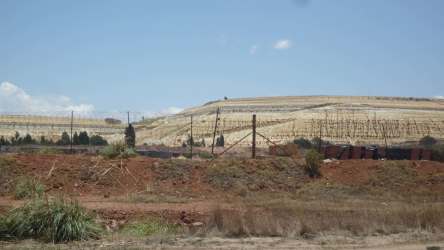How Nuclear Power powers the Bomb
The interdependence of military and civilian nuclear industries

“Energy too cheap to meter”
was the initial sales motto of the nuclear industry. Today we know that nuclear power is, in fact, the most cost intensive Technology for Energyproduction, the costs of uranium mining, deconstruction of nuclear power plants and nuclear waste not even considered.
Without a “robust” civil nuclear industry and the associated nuclear infrastructure, nuclear weapons programmes would not be sustainable due to the high costs, risks and need for trained personnel.
The civilian use of nuclear power began with the “Atoms for Peace” speech by US President Eisenhower before the UN General Assembly in 1953 in which he said “The United States knows that peaceful power from atomic energy is no dream of the future” and announced that nuclear fission, which will forever be associated with the horrendous bombings of Hiroshima and Nagasaki, could be a blessing and solve all mankind’s energy problems through the use of nuclear power plants. Governments and the nuclear industry have carefully concealed and denied any links between civil and military nuclear programmes, implying that there are two, carefully separated nuclear production cycles—a military one and a civil one.
A closer look at the global nuclear industry shows a different picture:
Nuclear-weapon states dominate current investments in nuclear energy. China is leading the way, while the other nuclear weapon states Russia, India, Pakistan, France, the UK and the USA also have active nuclear power plant projects. Russia also has plans to build, finance and operate nuclear power plants in Belarus, Bangladesh, Turkey and Hungary, while France is constructing nuclear power plants in Finland and the UK.
While new technologies usually become more efficient and cheaper over time, the opposite trend has emerged for nuclear power: the production of one watt of energy by solar or wind power has become continuously cheaper in recent years, while the production of one watt of energy by nuclear power has become more expensive over the same period—in part due to increased safety regulations after the . Moreover, solar and wind power have long since overtaken nuclear power in terms of installed capacity and produce only half and one-sixth of the CO emissions of nuclear power plants, considering the entire life cycle of the plants and fuels.
Read more on: https://www.ippnw.de/startseite.html
and https://www.worldnuclearreport.org


